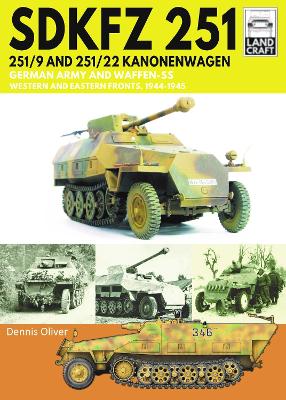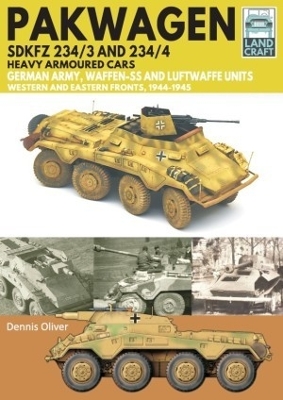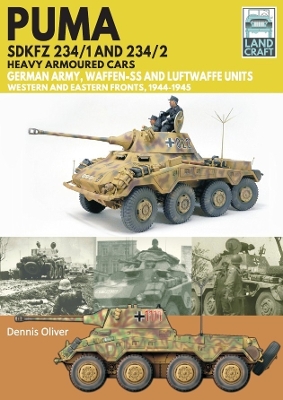Land Craft
3 total works
The Sdkfz 251 halftrack was one of the most versatile armoured vehicles produced by either side in the Second World War. Designed by the firm of Hannoversche Maschinenbau AG, or Hanomag, production ran to over 15,000 vehicles and it was eventually built as twenty-three separate variants serving as not only a personnel carrier, but also a command vehicle, mobile rocket launcher, armoured ambulance and bridge-layer. In his first book in the LandCraft series Dennis Oliver examines the Sdkfz 251 variants armed with the 7.5cm gun, initially used as an infantry support and reconnaissance halftrack and later as a tank killer as the result of Hitler's desperation to arm as many vehicles as possible with anti-tank weapons. Drawing on official documentation and unit histories Dennis investigates the formations that operated these deservedly famous vehicles and uses archive photos and extensively researched colour illustrations to examine the markings, camouflage and technical aspects of the Sdkfz 251/9 and 251/22 halftracks that served on the Western and Eastern Fronts in the last months of the war. A key section of his book displays available model kits and aftermarket products, complemented by a gallery of beautifully constructed and painted models in various scales. Technical details as well as modifications introduced during production and in the field are also examined, providing everything the modeller needs to recreate an accurate representation of these historic tanks.
Experience in the Polish and French campaigns had convinced the German high command of the value of fast-moving, armed reconnaissance vehicles. But it was realised that many of the early designs were too lightly-armed and development of a heavy eight-wheeled prototype resulted in the Sdkfz 234 series of armoured cars, the first of which entered service in late 1943. Built by the firm of Bussing-NAG, these sturdy and reliable vehicles were gradually up-armed and served in the infantry support role and eventually as tank killers, largely as the result of Hitler's desperation to arm as many vehicles as possible with anti-tank weapons. Drawing on official documentation and unit histories Dennis investigates the formations that operated these vehicles and uses archive photos and extensively researched colour illustrations to examine the markings, camouflage and technical aspects of the Sdkfz 234/2, 234/3 and 234/4 armoured cars that served on the Western and Eastern Fronts in the last months of the war. A key section of his book displays available model kits and aftermarket products, complemented by a gallery of beautifully constructed and painted models in various scales. Technical details as well as modifications introduced during production and in the field are also examined, providing everything the modeller needs to recreate an accurate representation of these historic vehicles.
The lightning advances of the German armoured units during the Polish and French campaigns were spearheaded by fast-moving, armed reconnaissance vehicles. But these early designs suffered heavily due to their light weaponry and thin armour and a programme was soon underway, led by the firm of B ssing-NAG, which culminated in the development of the Sdkfz 234 series of heavy eight-wheeled armoured cars, the first of which entered service in late 1943\. These vehicles proved to be rugged and reliable and were gradually up-armed to serve in the infantry support role and eventually as tank killers. This volume of the LandCraft series concludes the story of the Sdkfz 234 series, examining the versions that took part in the last battles of the war. Using archive photos and extensively researched colour illustrations Dennis Oliver examines the Sdkfz 234/1 and Sdkfz 234/2and the units that operated these often neglected, yet important, armoured vehicles. A key section of his book displays available model kits and aftermarket products, complemented by a gallery of beautifully constructed and painted models in various scales. Technical details as well as modifications introduced during production and in the field are also examined, providing everything the modeller needs to recreate an accurate representation of these historic tanks.


